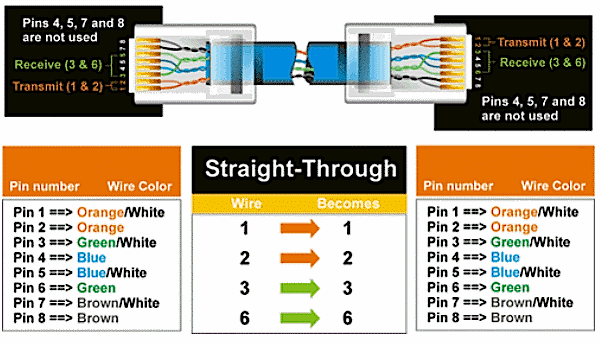Networking cables
are networking hardware used to connect one network device to other network devices or to connect two or more computers to share printer, scanner etc. Different types of network cables like Coaxial cable, Optical fiber cable, Twisted Pair cables are used depending on the network's topology, protocol and size. The devices can be separated by a few meters (e.g. via Ethernet) or nearly unlimited distances (e.g. via the interconnections of the Internet).While wireless networks are much easier deployed when total throughput is not an issue, most permanent larger computer networks use cables to transfer signals from one point to another.
Twisted pair - Cabling is a form of wiring in which pairs of wires (the forward and return conductors of a single circuit) are twisted together for the purposes of canceling out electromagnetic interference (EMI) from other wire pairs and from external sources. This type of cable is used for home and corporate Ethernet networks.
There are two major types of twisted pair cables: shielded, unshielded.
Fiber optic cable
An optical fiber cable consists of a center glass core surrounded by several layers of protective material. The outer insulating jacket is made of Teflon or PVC to prevent interference. Optical fiber deployment is more expensive than copper but offers higher bandwidth and can cover longer distances.There are two major types of optical fiber cables: short-range multi-mode fiber and long-range single-mode fiber.




Latency Speed Test
ReplyDelete